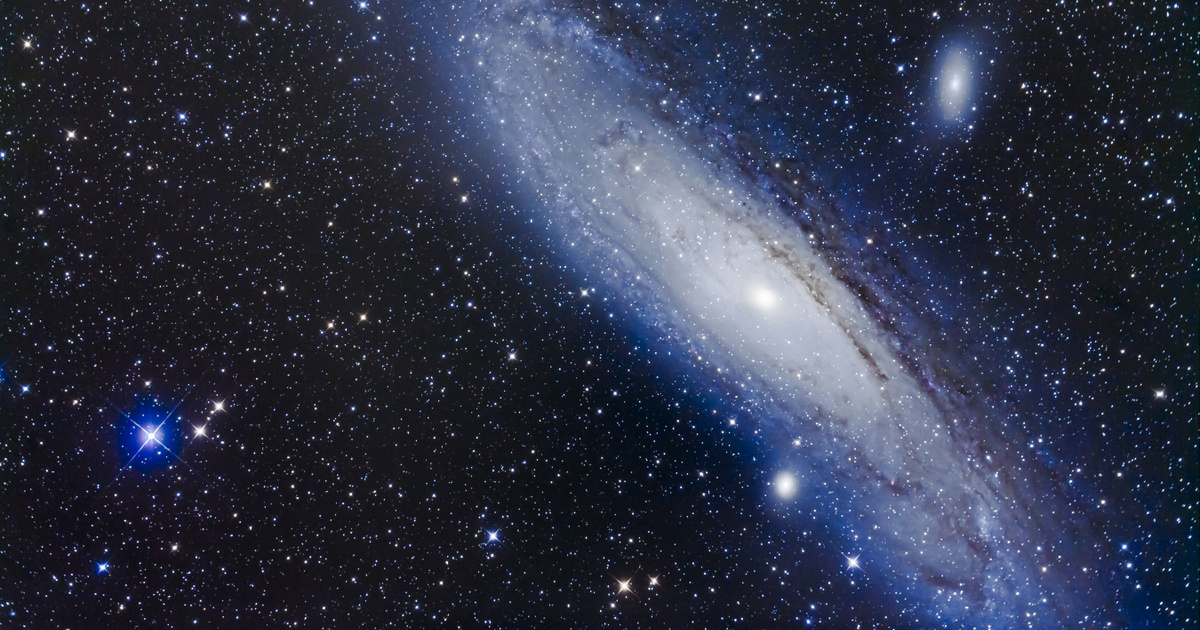Supermassive black holes at the center of galaxies are merging everywhere in the universe, and this will eventually be the fate of the black hole at the center of our galaxy. The Wall Street Journal.
Light and matter are sucked into the core of nearly every galaxy by these mysterious cosmic structures and are impossible to see with conventional telescopes.
But now, for the first time, astrophysicists have gathered direct knowledge about these objects in the form of gravitational waves rippling through space and time. What they learned indicates that the number of pairs of merged black holes can number in the hundreds of thousands – possibly millions.
Gravitational waves from whole mergers They contribute to the hum of the universe, which researchers can also sense from Earth; These are very low frequency gravitational waves.
The results of the study, which was conducted in collaboration with more than a hundred scientists, confirm what will one day happen to the star in the center of our galaxy. arch a* It is known as a supermassive black hole when it collides with its companion at the heart of the Andromeda galaxy.
The Milky Way is on a collision course with the Andromeda Galaxy, and in about 4.5 billion years the two galaxies will merge.
— said Joseph Simon, an astrophysicist at the University of Colorado, Boulder, a member of the North American Nanohertz Gravitational-Wave Observatory (NANO), who helped lead the work with support from the National Science Foundation.
According to him, this merger will eventually lead to Andromeda and arch a* The black hole at its center will move into the center of the newly merged galaxy, forming what is called a binary system. The findings are reported in a series of studies published Wednesday in the Astrophysical Journal Letters.
Until now, we didn’t even know if supermassive black holes merged, but we now have evidence of hundreds of thousands of black holes merging.
– said Chiara Mingarelli, an astrophysicist at Yale University and a fellow at Nanograph.
These are the craziest things in our world
The new study could answer questions such as how these black holes grow and how often their host galaxies merge.
“These are the craziest things in our world,” said Masha Barikhtar, a physicist at the University of Washington in Seattle, who was not involved in the research. “There is no consensus yet on how they get that big.”
If scientists learn more about the history of supermassive black hole mergers, Barikhtar said, it could help reveal how they formed in the first place.
All moving objects with mass create gravitational waves – which are, in fact, distortions of space-time – theoretically predicted by Albert Einstein in 1916 but not discovered until nearly 100 years later.
In 2015, scientists using the Laser Interferometer Gravitational-Wave Observatory (LIGO) showed how short, high-frequency gravitational waves generated by mergers between less massive black holes shake the Earth. These vibrations are smaller than the width of a single subatomic particle.
The participants in the experiment received a Nobel Prize for their results.
According to Sarah Vigeland, a University of Wisconsin-Milwaukee physicist who oversees gravitational-wave nanograph research, LIGO can measure waves that vary over short timescales from colliding objects such as neutron stars.
We get a wave of gravitational waves and then it ends
He said.
The observatory is not able to detect low-frequency gravitational waves, which vary over a longer time scale — from months to decades — and originate from more massive objects.
So the Nanograph group, as part of an international consortium that also includes European, Asian and Australian groups doing similar work, decided to measure these space-time waves in a different way: by tracking how they disrupt radio waves emitted by stellar remnants called pulsars.
According to Columbia University astrophysicist Slavko Bogdanov, who was not involved in this work, pulsars are effectively like cosmic clocks. They are the remnants of dead stars that rotate hundreds of times per second and periodically emit radio waves that can be detected by ground-based radio telescopes.
Since the regularity of the pulses of radio waves can be calculated with high precision, any difference in their arrival at Earth – be it a little late or early – that can be attributed to the influence, strength and source of gravitational waves.
The investigation lasted 15 years
The Nanograph group has been monitoring the timing of radio waves from pulsars in our galaxy for 15 years, Vigeland said, using the Arecibo Observatory in Puerto Rico, the Green Bank Telescope in West Virginia, and the Very Large Array in New Mexico.
“We monitor pulsars regularly, about once a month,” he said, adding that the results include data from 68 pulsars.
While 15 years may seem like a long time to collect data, Simon says it takes that long to measure slow gravitational waves from supermassive black holes. According to the expert, the arrival time of the pulses from the rotating stars on the clock changes by only a few hundred billionths of a second over a decade.
According to Bogdanov, finding more pulsars and adding them to the data set will be necessary to improve sensitivity in detecting similar gravitational waves.
There are still undiscovered objects in the universe that emit gravitational waves, says Julie Comerford, an astrophysicist at the University of Colorado at Boulder and a member of Nanograph. According to him, one of these other sources could be ripples in space-time from the Big Bang.
About 14 billion years ago, the early universe had a lot of bends, a bit like a wrinkled blanket, Commerford said, before it expanded at the speed of light or faster, then spread out and flattened.












































